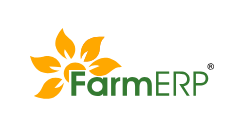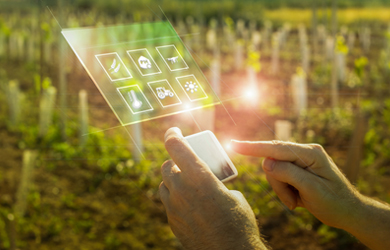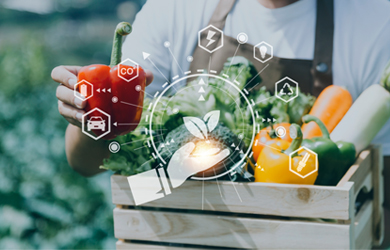Digital Agriculture Management: The Next Frontier for Exporting Fresh Fruits & Vegetables
Fresh fruit & vegetable businesses have witnessed unwavering growth opportunities, even during the COVID-19 pandemic. However, various export challenges created hindrances for the growth of the stakeholders. Here’s how digital agriculture management systems can facilitate multiple export operations with technology, opening new avenues of growth for fresh fruit & vegetable exporters around the world.
In recent times, the traditional approach of the agriculture industry is undergoing a fundamental transformation. While the first technology revolution in agriculture made great strides, the new global trends are placing pressure on the legacy production and supply chain models in meeting the demands. And, challenges are greater.
Today, the agriculture supply chain is in a continual flux, with shifts in consumer preferences, improvements in tech-enabled productivity, and turmoil in domestic and international markets. The marketplace for fresh fruits and vegetables, in particular, is becoming increasingly globalized and interconnected.
Supply Chain Management of Fresh Produce to Bring More to the Table
The last few decades have seen significant changes in food consumption and lifestyle across the globe. These changes have not only brought about a rapid rise in food production but also increased the need for an efficient supply chain management in agriculture.
An emerging trend of consumers seeking healthier versions of food and avoiding preservatives and chemicals has reflected an increase in space allocated to the fresh perimeter of a store. Simultaneously, trade management and supply chain of fresh produce is becoming complex and further complicated by fragmented outbound and inbound networks.
Export Operations for Fresh Fruits and Vegetables in Transition
Digital agriculture and smart farm management systems as a whole have impacted the fresh fruits and vegetables market massively in the recent past. Developed countries have advanced to 21st century agriculture, characterized by precision farming – for instance, using analytics to apply crop nutrients on each zone of a field at variable rates. Similarly, digital initiatives for the agriculture supply chain in general and export of fresh fruits and vegetables in particular are making strong strides.
In the past, the agriculture supply chain was characterized by an overwhelming focus on cost reduction, while subsidies and export tariffs continue to change market dynamics and shift the competitive position of countries. On the other hand, developments in new technologies and consumer choices as well as trade wars have led to a revolution in the export business of fresh fruits and vegetables.
The significant rise in the world’s population, especially health-conscious consumers, has been leading to increased demand for higher-quality produce and broadening of the product range. This presents a strategic opportunity for stakeholders in the fresh fruit and vegetable supply chain .
The Unspoken Challenges in Exporting Fresh Produce
While consumer demands are evolving, there are many reasons why exporting fresh produce can be interrupted – for instance, the impact of unexpected weather patterns or miscommunications and trade disputes. Moreover, due to lack of data, transparency, traceability and information flows, exporters and traders find themselves facing a heavy burden of proof when it comes to ensuring quality of products and packaging.
The lack of a single trusting fam management platform – serving as a unifying system of storing sales and product information based on each trade – has also been compelling export companies to allocate resources such as time and manpower towards tracking sales, shipping documentation, and financial payments.
Additionally, with different communication channels across domestic and international markets, efficient sharing and verification of information emerge as one of the key challenges for fresh fruit & vegetable businesses. Moreover, disputes among exporters often translate to a massive loss of margins. A number of bottlenecks in supply chain management of fresh fruits and vegetables thus need to be addressed to realize new opportunities.
Digitalization Remains the Key for Fresh Fruit & Vegetable Exporters
With strong partnerships and connections between farmers, traders, and retailers, the supply lines of fresh fruit and vegetables are becoming shorter and more efficient. It is highly likely that demand for improved quality, longer shelf life, and guaranteed product safety will continue to be on a significant rise. Given the nature of the product and high competition in the market, the electronic technology is playing an important role in today’s fresh fruit and vegetable business.
Improved sensors have been forthcoming to collect data on the internal attributes of each fruit and assess the quality. In addition, the emergence of sophisticated handling and storage systems has made a particular impact on the postharvest industry.
While selection of products and overseas markets along with price and costing continue to influence the export business, stakeholders are also focusing on leveraging tracking applications and implementing digital standard working groups. This can also, ultimately open up new possibilities for maintaining high export quality of fresh fruits and vegetables.
Today, the agriculture industry is capturing more data than before, from agronomy and weather to logistics and market price volatility. As a result of significant growth in computational power, data storage capacity has increased and storage cost has declined for fresh fruit and vegetables as well as other agricultural products.
Therefore, digital agriculture and farm analytics have become a priority for executives operating in the export of fresh fruit and vegetables, as their value becomes increasingly clear. These technologies can further equip the industry leaders with a new source of competitive edge by exploring untapped value within fresh fruit and vegetable business and agriculture supply chains.
Blockchain as a Revolutionary Agriculture Supply Chain Technology
Recently, blockchain has gained increased publicity and its potential is starting to be explored beyond digital currency. Considering the ability to publicly validate, record, and distribute transactions, blockchain can provide product proof of integrity in increasingly complex supply chains. Small producers and traders can also use this proof to find buyers or gain marketing advantage.
With a single shared platform where the information is trusted by both buyers and suppliers, the blockchain technology is expected to reduce the friction of conducting business. Businesses can also easily track the movement of the product along with critical information such as quality, origin, and trade documents surrounding each supply chain transaction.





